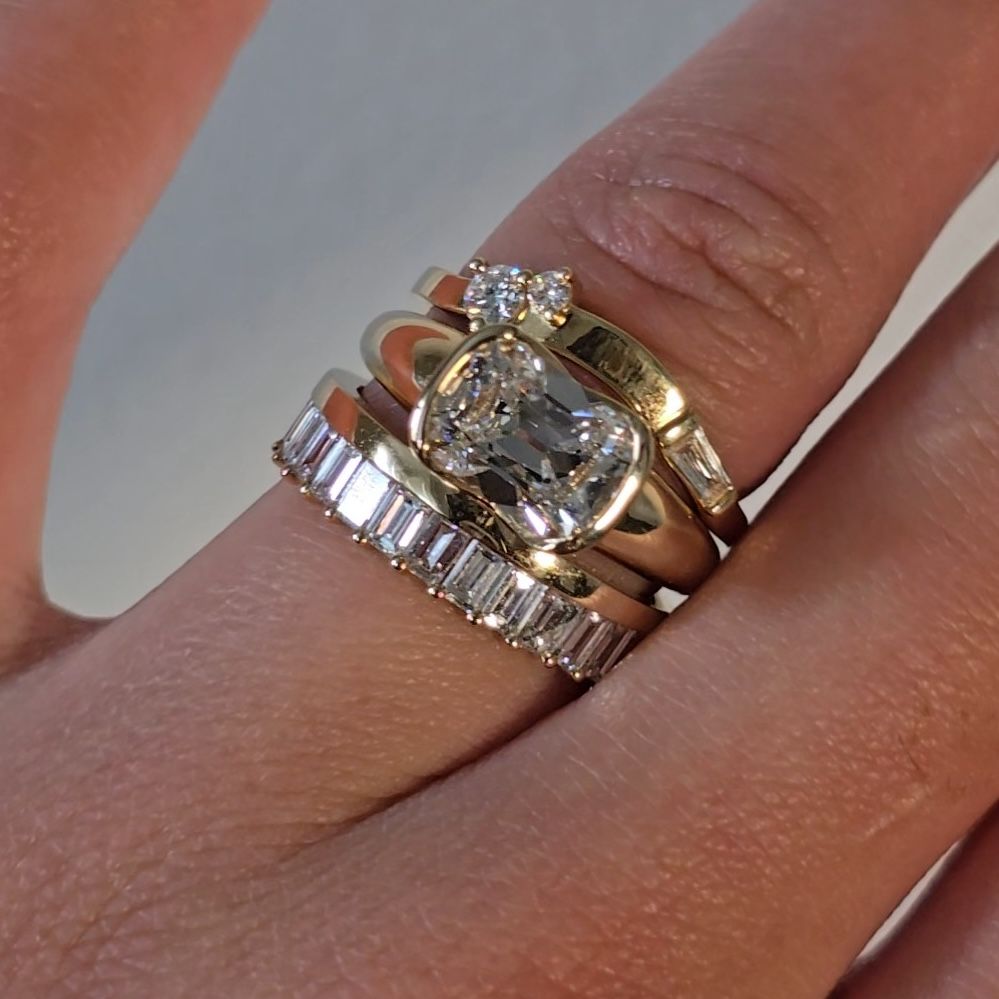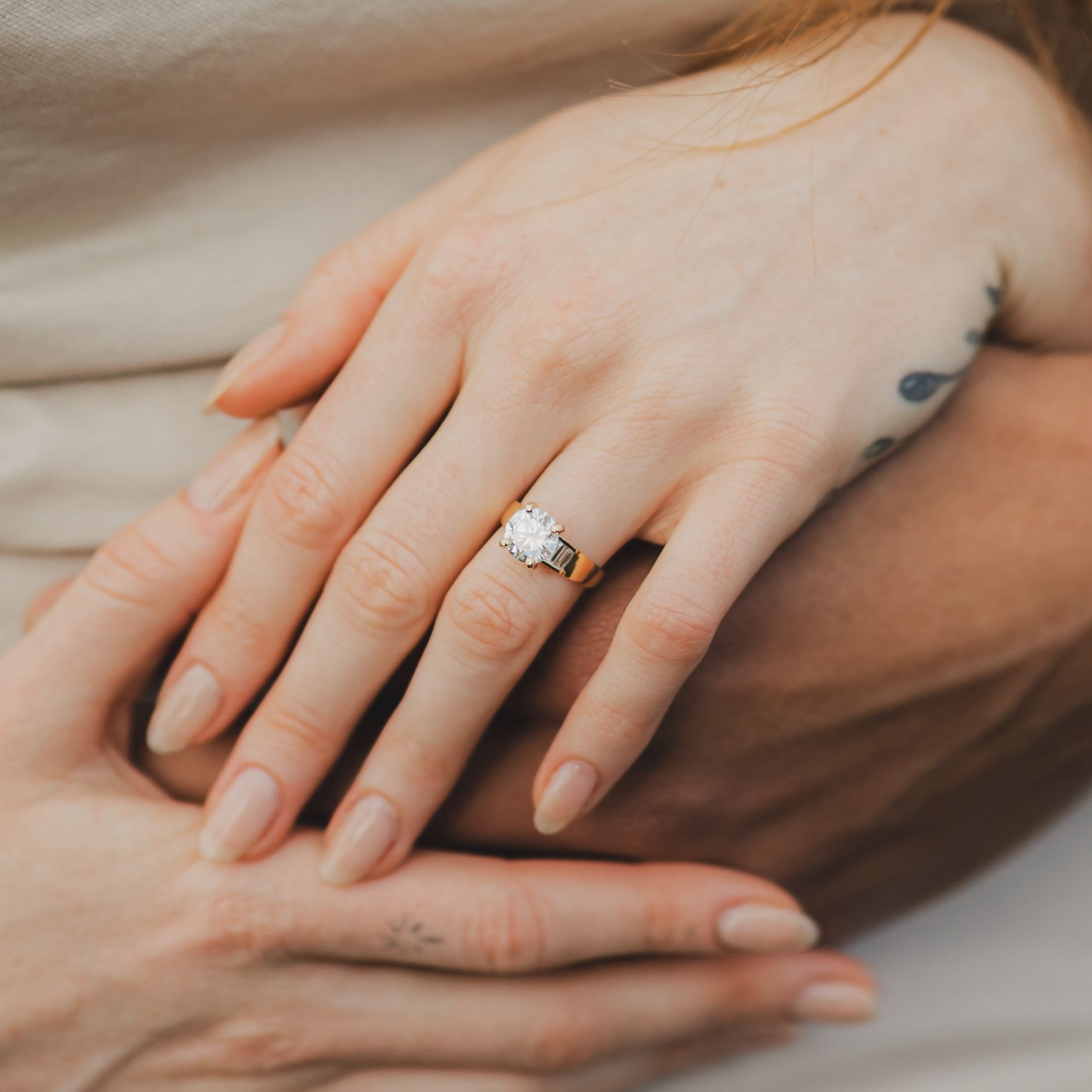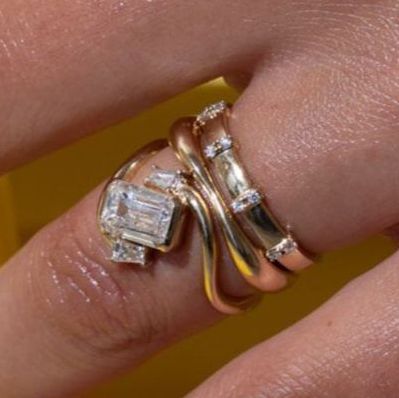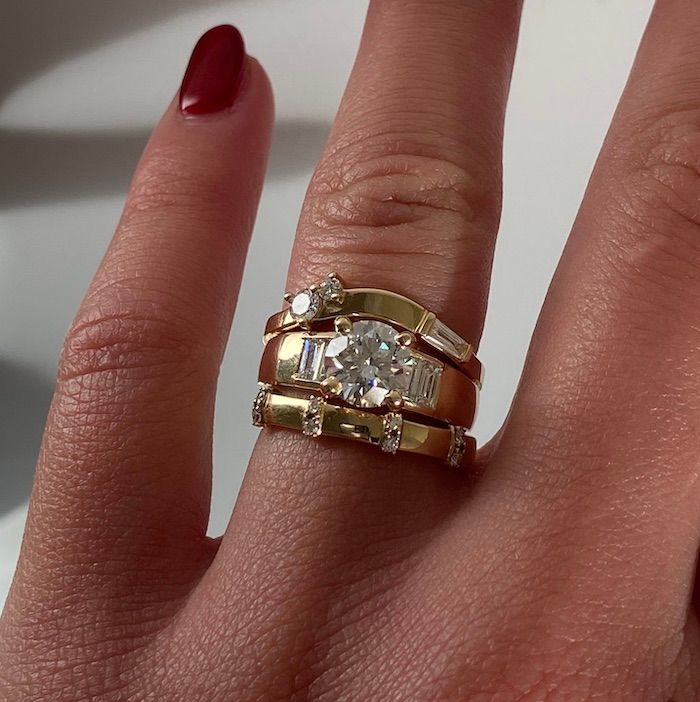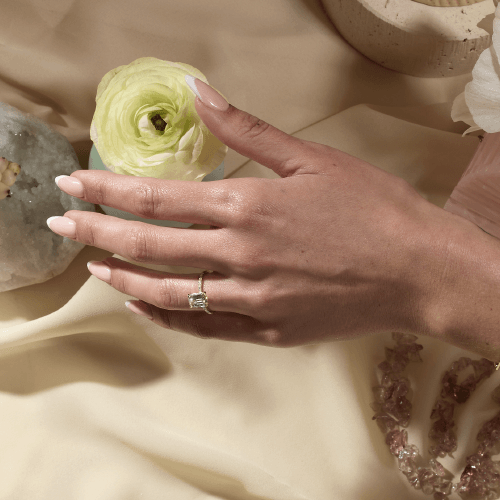
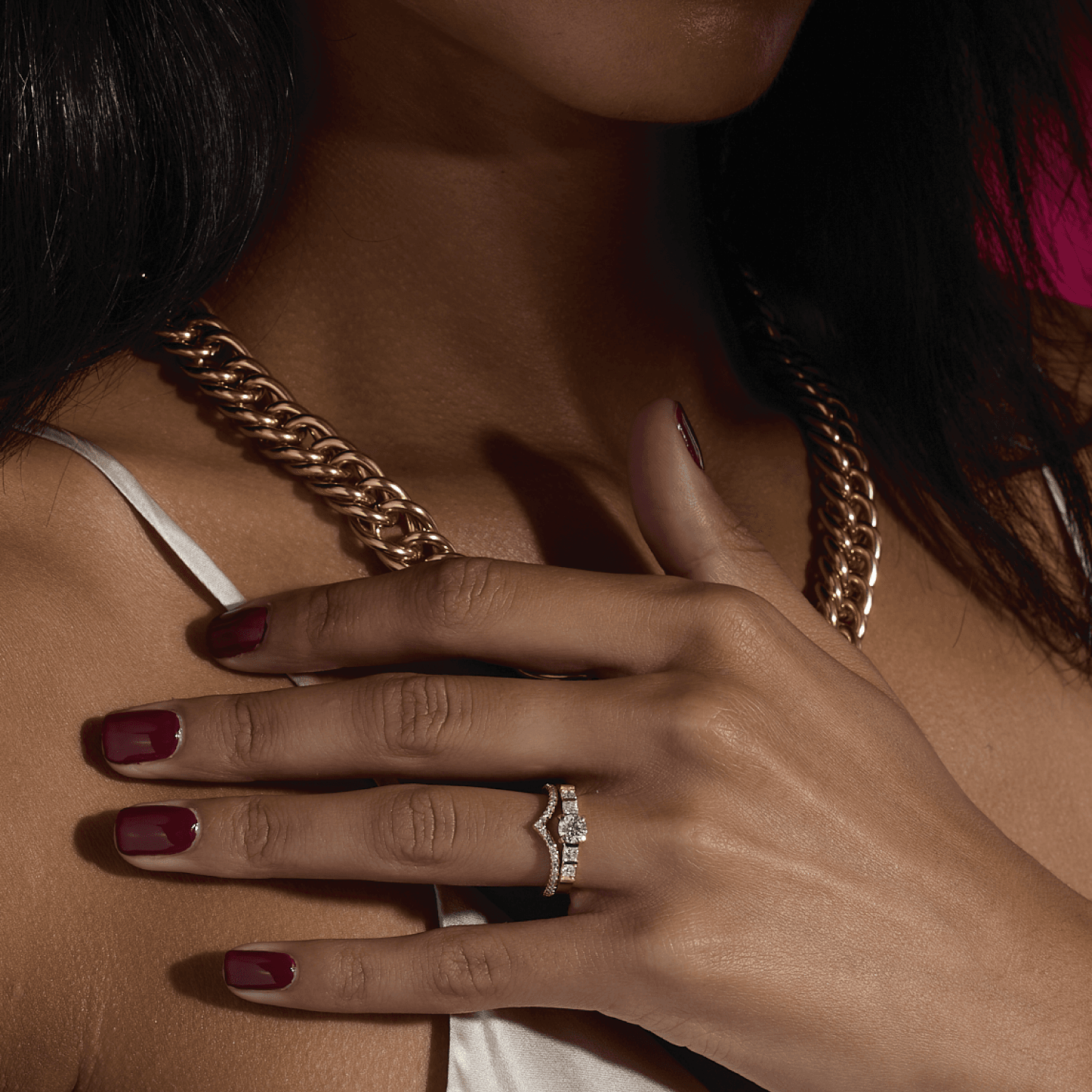
What Is a Lab-Grown Diamond, Exactly?
Lab-grown diamonds are molecularly identical to mined diamonds. So, how does it work?
But first, you want to know: Are lab-grown diamonds real diamonds? Yes. Lab-grown diamonds are chemically, physically, and optically identical to mined diamonds, according to the FTC. An expert jeweler can’t tell the difference, and neither can a diamond tester, a tool used to distinguish real diamonds from synthetic ones (like cubic zirconia).
“Diamonds have something we call ‘fire,’” says Eliette founder Jenny Chung Seeger, “little bursts of light that come out of the diamond and catch your eye.” Whether you’re looking at a lab-grown or mined diamond, when it catches the light, you’ll see that fire.
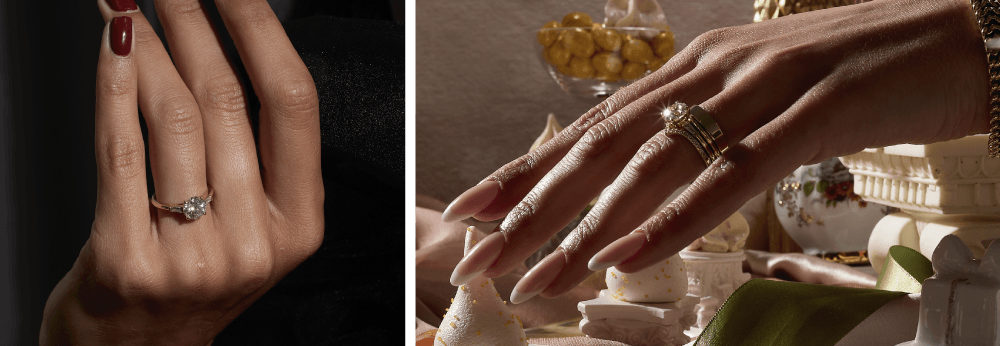
The biggest difference between lab-grown diamonds and mined diamonds is how they’re created, which sounds obvious. We believe there’s a time and a place for both types of diamonds (the more diamonds, the merrier), but we’re invested in lab-grown diamonds because of their affordability, sustainability, and well, that sparkle. There are nuances between the two, so let’s get into it.
A (Very) Brief History of Lab-Grown Diamonds
Lab-grown diamond experimentation began in the 1950s, and by the 1970s, GE was leading the way with newly patented machinery—huge anvil presses that made what they called “synthetic” diamonds at the time using the HPHT method (more on that later). The first lab-grown diamonds were small and yellowish-brown because the technology wasn’t quite there yet. Those diamonds were—and still are—mostly used as industrial abrasives because diamonds are the hardest substance in the world, even a shred of one can be put to use on an assembly line. Today, the quality has vastly improved, and we’re having a bit more fun with them.
How Lab-Grown Diamonds Are Created
Mined diamonds deserve all the hype we’ve given them over thousands of years. They didn’t get here easily. Diamonds were first formed billions of years ago when volcanic eruptions far beneath the Earth’s surface trapped particles of carbon and, along with the pressure of 100+ miles of soil above them, bonded the carbon together to create the crystals we dig up and polish into diamonds.
“We're used to carbon in the food we eat, our bodies, and the plants around us,” says Dr. Daniel E. Ibarra, geochemist at Brown University, “but that carbon is bonded to a whole bunch of other things, whereas a diamond is carbon bonded to itself in a very organized and what happens to be a very beautiful mineral structure. It’s unique.”
To overly simplify it: Extreme heat + intense pressure + carbon = diamond.
There are two ways lab-grown diamonds are made, and Eliette’s diamonds use both methods. The first is HPHT (High Pressure, High Temperature), which mimics how diamonds were formed in the Earth. A small, rectangular shred of diamond, called a “seed,” is placed in a chamber and then subjected to molten-hot heat and intense pressure, “roughly equivalent to the pressure exerted by a commercial jet airplane if balanced on the tip of a person’s finger,” per the Gemological Institute of America (GIA). The heat and pressure force the carbon molecules to join together and grow into crystals.
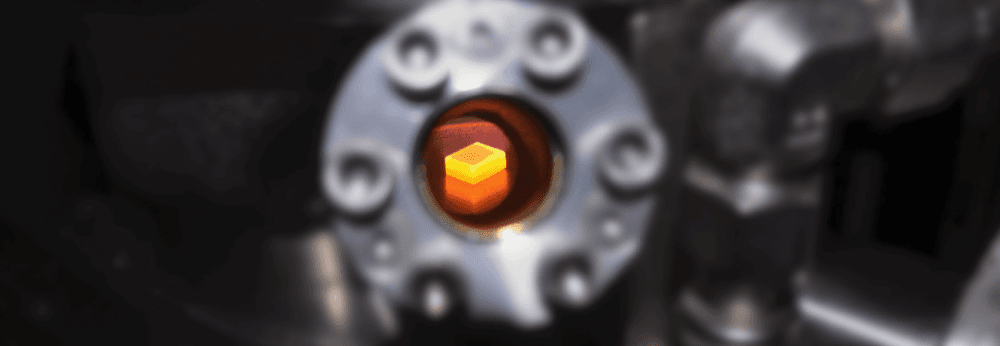
The second method is CVD (Chemical Vapor Deposition), which uses low pressure and is “closer to semi-conductor manufacturing than diamond mining,” explains Dr. Jonathan Levine-Miles, chief process officer at WD Lab Grown Diamonds in Washington D.C. Similar to HPHT, CVD diamonds begin with diamond “seeds” to jumpstart the rest of the diamonds’ creation. In a closed chamber that heats up to nearly the same temperature as the sun, carbon vapors are pumped onto the seed, and over several weeks it grows taller, layer by layer, into a diamond.
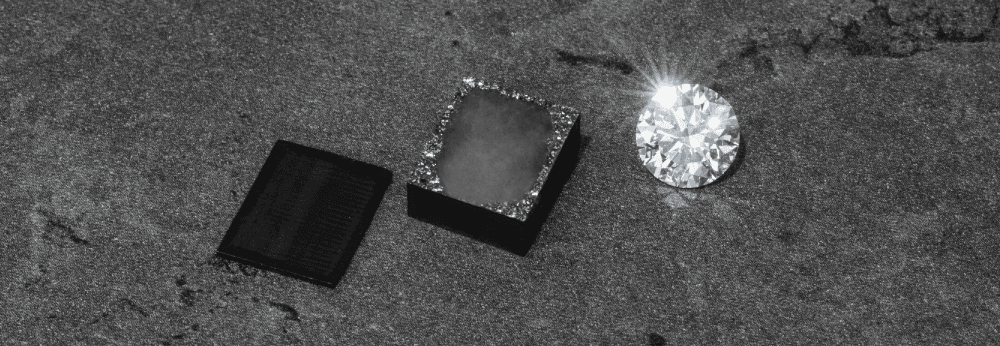
That diamond appears as a diamond in the ground does, like a rough-edged pebble. Once it’s polished and cut, it’s ready to be set into a ring, a pair of earrings, or whatever your heart desires (one very special belly-button ring?). Just like mined diamonds, lab-grown diamonds come in a range of sizes and can contain impurities—big, perfect ones are extremely rare—and can be certified based on cut, color, clarity, and carat.
That was a pretty simplified explanation of both methods, so if you’d like to know more we recommend this in-depth article by the GIA, which certifies many lab-grown diamonds.
How Lab-Grown Diamonds Can Be a More Sustainable Option
The energy used to dig a new diamond mine depends on where the mine is located, but it takes a huge toll on the land, neighboring region, and the communities around it. Hundreds of thousands of pounds of soil can be displaced when a mine is being built, a process that can span decades. In some cases, entire communities have to be resettled to make room for the vast hole in the ground that diamond mines require. Diamond mines can cause deforestation, make land unfit for crop production, pollute nearby rivers, exploit water resources, among other environmental impacts. But scientists are rarely given access to diamond mines and those impacts aren’t extensively studied. The biggest environmental report about diamond mining was funded by an association of diamond companies.
“Some mines can do a good job at mitigating their impacts on the groundwater and on potentially contaminating sites, but other places might not,” explains Dr. Ibarra.”People want to make broad generalizations about the mining industry of various metals or various gems, but in reality there are a lot of local factors that make a place a good sustainable resource versus a place where we probably really shouldn't be digging up the ground.” In short, it’s complicated.
That said, he adds: “Every time you’re digging something out of the ground, you’re using petroleum of some sort to run those mines.” A decade or more of digging isn’t going to leave the soil, or the water systems around it, unscathed.
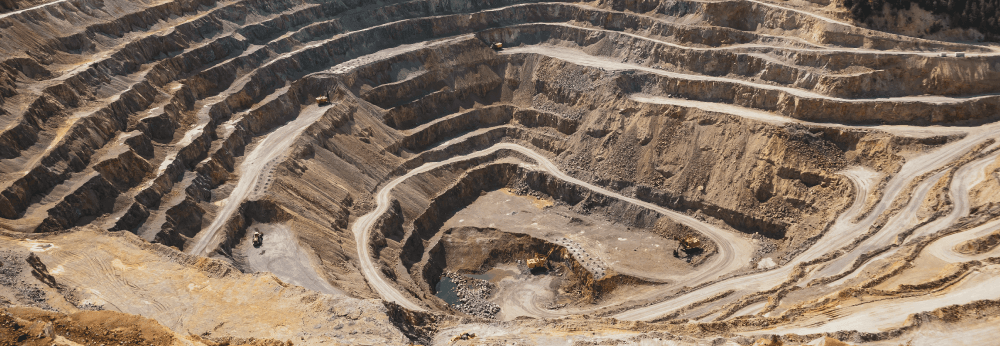
Mine work can be dangerous, from the physical work but also the threat of violence in politically fraught regions. Lab-grown diamonds eliminate all of those factors. Like the rise in vertical farms, where produce is grown without the interference of weather events and pesticides, lab diamonds don’t exploit the Earth’s natural resources—or its people.
However, not all lab-grown diamonds are sustainably produced. It requires an incredible amount of energy to produce lab-grown diamonds; imagine your electric bill if the heat was cranked to 3,000°F (the temperature used in the HPHT method). Many diamond labs across the globe, where there are little or no environmental regulations, use polluting coal power. The good news is that there are several labs in the US that operate with renewable energy, like hydropower, and buy carbon offsets to counter their output.
Eliette works closely with carefully vetted American labs that all use renewable energy; each lab is rigorously audited by a third party to ensure its carbon neutrality and the ethical treatment of its workers.
But Someone Must Be Able to Tell a Mined Diamond from a Lab-Grown One, Right?
Not to the human eye, nope. The only way to know if a diamond is mined or lab-grown, as of now, is to look under an extreme microscope to find the diamond’s laser-engraved certification number, which may reveal where it came from, or send it to a gemological lab that can inspect a diamond’s crystal structure and other trace details that reveal it was lab-grown.
“We love lab-grown diamonds,” says Eliette founder Jenny Chung Seeger, “because they’re accessible for a generation of people who don’t want to spend a lot of money, who should have an option for a well-thought-out, design-forward ring. There’s more to it than just the diamond.”
Further reading:
- Laboratory-Grown Diamonds by the Gemological Institute of America (GIA).
- HPHT and CVD Diamond Growth Processes: Making Lab-Grown Diamonds by Dr. James E. Shigley, July 25, 2016
- Features of Synthetic Diamonds by Sally Eaton-Magaña and Christopher M. Breeding. Gems & Gemology, Vol. 54, No. 2, pp. 202–204.
- Beyond the Hype of Lab-Grown Diamonds by Maddie Stone, Gizmodo, May 21, 2019.
- Shopping for a Diamond Is About to Change by Victoria Gomelsky, New York Times, Nov. 17, 2020

